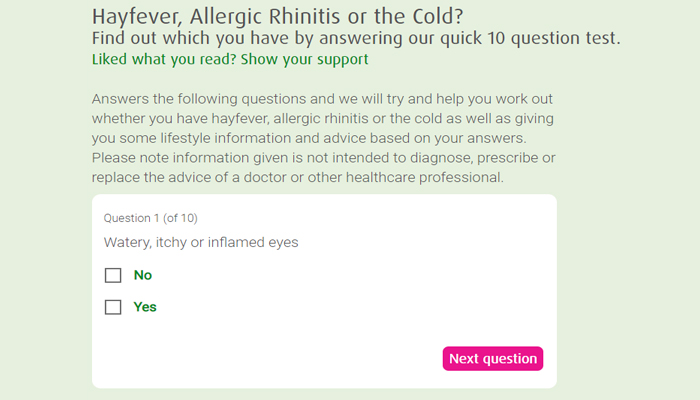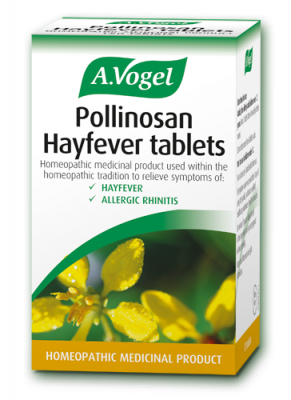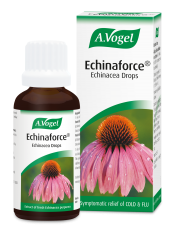Why do they get mixed up?
When the sun is shining and the flowers are in full bloom, it’s natural to assume your symptoms are due to hayfever, especially if you are prone to it. If you have never had hayfever before however, you are more likely to assume you have summer cold.
This is not always the case though. Although most colds occur during the winter months, you can catch a cold at any time of the year and in the case of hayfever, you can develop an allergic reaction as an adult, even if you never had hayfever as a child.
So what are the similarities?
Most people know that sneezing, runny noses, congestion and sinus pain are symptoms common to both the cold and hayfever. Some lesser known shared symptoms include tiredness, headaches and difficulty concentrating.
Coughs are another common symptom. While they are most commonly caused by viral infections and are usually the residue of the cold or flu, allergies such as hayfever can also lead to dry coughs. This is most noticeable when pollen counts are high.
With so many common symptoms, it’s easy to see why people can get confused. Being aware of the differences between a cold and hayfever is important in that it can help ensure you choose the correct treatment for your condition.
The differences
Firstly it’s important to know that a cold is caused by a virus, whereas hayfever is predominately caused by an allergic response, typically to pollen.
There is one symptom in particular that can help differentiate between hayfever and a cold and that’s…itchiness! If you have red, watery, itchy eyes, an itchy throat, even an itchy palate (top or back of the mouth) and sore ears then it’s probably hayfever as these symptoms are rarely experienced when you have a cold.
The one exception would be an itchy nose which can often appear before a sneeze in both hayfever and a cold.
Another good indicator of whether it is a cold or hayfever is the colour of your nasal discharge. Although not the most pleasant of topics, it’s helpful to know the difference. If it’s a cold your nasal discharge is more likely to be yellowish/green, whereas if it’s hayfever it will most likely be clear.
With hayfever, you rarely get a sore throat (usually it is just an itchy dry feeling), whereas it is a frequent indicator of an impending cold. Therefore, if you have cold-like symptoms and a sore throat, or have had one in the last few days, it is more likely to be a cold.
Duration
Both conditions are usually considered to be seasonal, with colds being more common during the winter months and hayfever during the spring and summer months. However, colds can happen at any time of the year and hayfever or allergic rhinitis can occur all year long, especially if it is being caused by allergens other than pollen such as dust mites, animal dander and mould.
The duration of your symptoms is another good indicator of which condition you have. While the onset of a cold is usually a gradual process which can last for up to 14 days, hayfever symptoms tend to come on all at once and can unfortunately last much longer – for weeks, months or even all year. With hayfever, your symptoms will last as long as you are exposed to the allergen.
"But I've never had hayfever before!"
When you start feeling unwell, it’s easy to think it could be a cold, especially if you have never had hayfever before. In the UK it is estimated that 1 in 5 people suffer from hayfever and it’s important to know that hayfever can start at any age.
It’s a common misconception that hayfever starts in childhood, so if you never had it as a child you won’t get it as an adult.
Unfortunately, experts are unclear as to what triggers it, but what they do know is that it can often be triggered later in life with a growing number of middle aged adults and elderly now being affected for the first time.
Is it possible to get both?
Yes, although this is a cruel trick your body can play on you, it is possible to have a cold and hayfever at the same time, especially if your immune system is very weak.
Quick ways to tell the difference
When it’s a cold you are more likely to:
- Notice symptoms coming on gradually
- Symptoms usually last no longer than 14 days (if you still have symptoms after 2 weeks it’s best to consult your doctor)
- Have a sore or dry throat
- Have nasal discharge which is yellowish/green
When it’s hayfever you are more likely to:
- Feel itchy, itchy itchy! (Eyes, throat, top of mouth, ears)
- Notice symptoms appear all at once (such as whenever the pollen is high)
- Have symptoms for longer (they last as long as you are exposed to the allergen)
- Have clear nasal discharge
Still not sure?
If you are still unsure about what is at the root of your symptoms then just take our hayfever health check quiz. All you need to do is answer 10 very simple questions on your symptoms and we’ll use your answers to work out whether hayfever, a cold or allergic rhinitis is the issue. Using your results we’ll also offer some advice to how best to treat the symptoms.
How to treat your symptoms
Once you have an understanding of which condition it is, the next step is finding the right remedy for you.
Our recommended remedy for cold symptoms is Echinaforce, but you can have a look at our common cold treatment page for further information about treatment options and home remedies.
Our recommended product for hayfever is Pollinosan, but again there are a wide range of treatments and home remedies so have a look at our hayfever treatment page for more information.
Originally published 27 April 2015 (updated on 18 January 2019)






 Our Pollinosan Tablets can bring relief from symptoms of hayfever and allergic rhinitis such as watery eyes, sneezing and a blocked nose. The tablets can be used alongside antihistamines and have no unwanted side effects such as drowsiness.
Our Pollinosan Tablets can bring relief from symptoms of hayfever and allergic rhinitis such as watery eyes, sneezing and a blocked nose. The tablets can be used alongside antihistamines and have no unwanted side effects such as drowsiness. Looking for a solution to curb those hayfever symptoms such as itchy eyes, constant sneezing and congestion, then look no further than A.Vogel’s Pollinosan Hayfever tablets.
Looking for a solution to curb those hayfever symptoms such as itchy eyes, constant sneezing and congestion, then look no further than A.Vogel’s Pollinosan Hayfever tablets.

